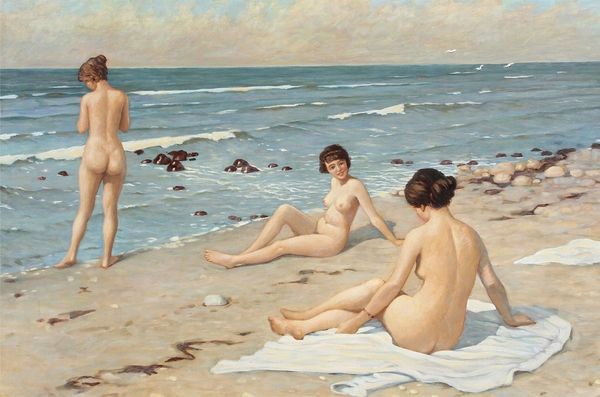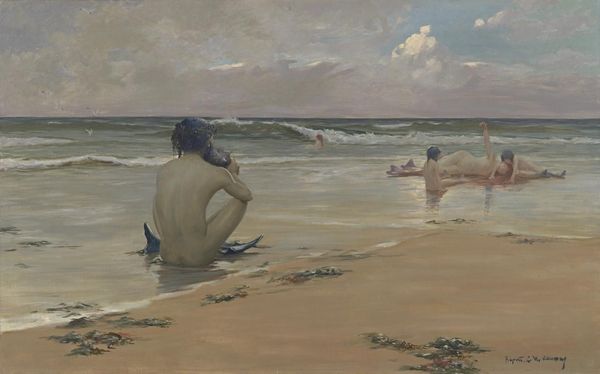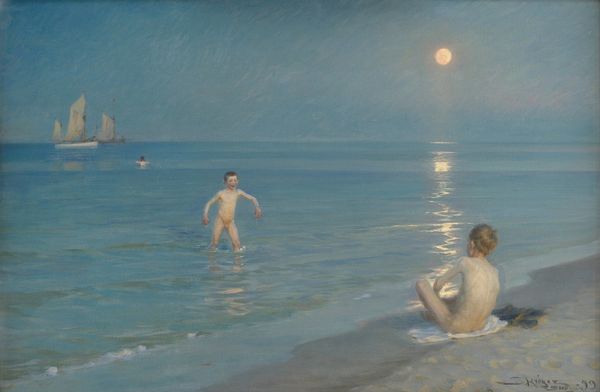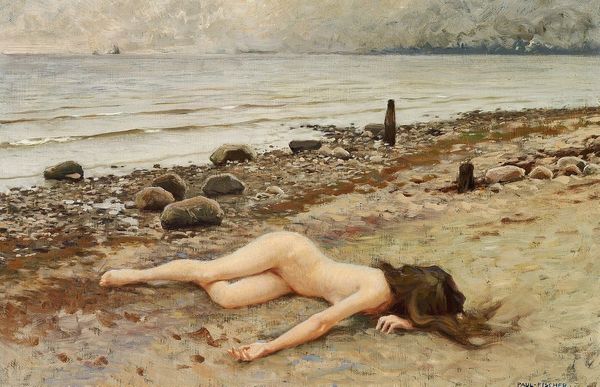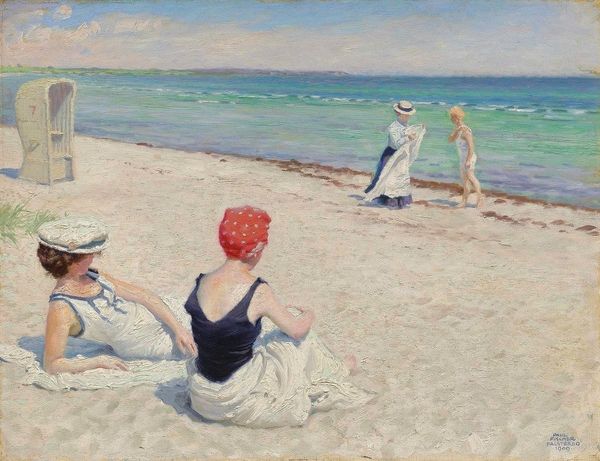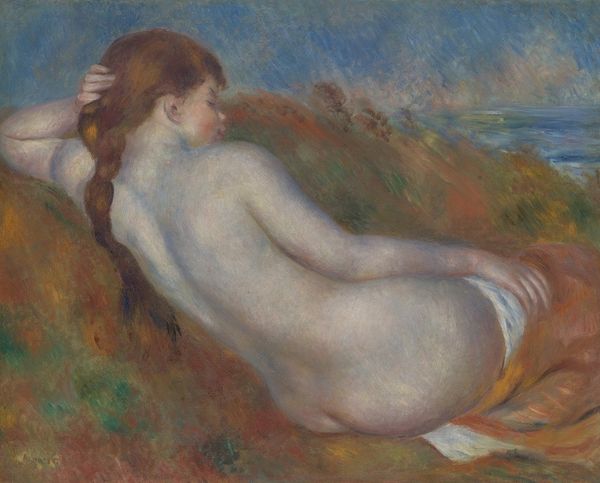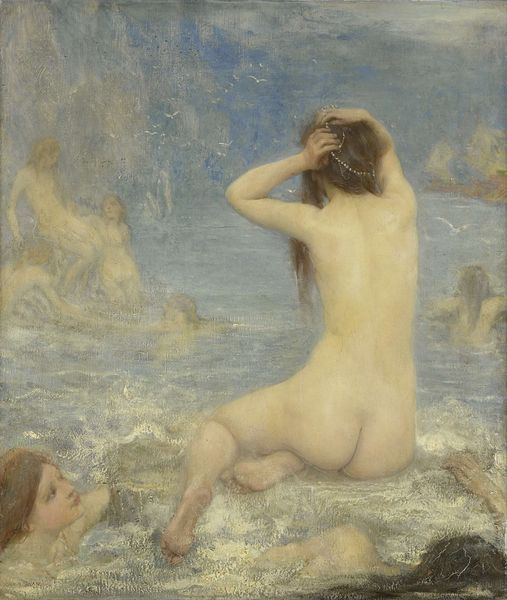
painting, oil-paint
#
figurative
#
painting
#
impressionism
#
oil-paint
#
landscape
#
oil painting
#
romanticism
#
genre-painting
#
nude
Copyright: Public Domain: Artvee
Curator: Here we have "Girls on the Beach, Båstad," an oil painting by Paul Fischer. Immediately, the pale tonality strikes me—an almost bleached quality to the scene. Editor: Indeed. The chromatic scale is narrow, lending the piece a dreamlike quality, almost ethereal. How might this contribute to our understanding of feminine representation in art at the turn of the century? Curator: The depiction of women in leisure activities speaks to emerging social freedoms, doesn't it? The naturalistic, almost unposed figures, break with more classical representations of women. They exist outside the male gaze. The way the sunlight washes out the figures creates a sense of accessibility, too, of their own personal freedom. Editor: But consider the composition itself. The way the women recline creates dynamic diagonal lines across the canvas. The juxtaposition of the figures against the seascape isn't merely contextual, but establishes spatial relationships that reinforce the foreground as a site for contemplation. Do you not think it significant, too, that the artist renders the sea, sky and figures using blended strokes to further obscure distinct details or hard boundaries? Curator: Certainly. It mirrors societal attitudes of that time, as ideas about gender roles evolved, yet were simultaneously resisted, but the lack of defined physical shape—a blurred, amorphous state is also echoed, right? Even so, the painting still functions as a marker of its era; it reflects anxieties about visibility and changing gender roles in the public space. Editor: I see how your reading situates Fischer's figures as subjects of their social environment and in this period it gives form to very specific cultural anxieties, yes. The formal harmony in his pictorial organization also produces that familiar sensation we often perceive while watching an ordinary sunset, yes. Curator: Absolutely. Considering the changing perception of femininity in Scandinavia during that time, Fischer captured a fascinating, complicated glimpse of progress—however ephemeral that feeling may have been. Editor: It certainly invites continued contemplation, from both our vantage points.
Comments
No comments
Be the first to comment and join the conversation on the ultimate creative platform.
